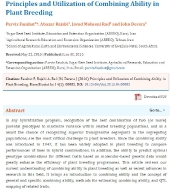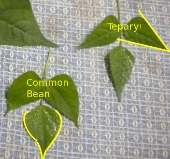
 4
4




I make a Maple Syrup instructional movie! Check it out HERE
SKIP books, get 'em while they're hot!!! Skills to Inherit Property
See me in a movie building a massive wood staircase:Low Tech Lab Movie
 4
4




 8
8




Western Montana gardener and botanist in zone 6a according to 2012 zone update.
Gardening on lakebed sediments with 7 inch silty clay loam topsoil, 7 inch clay accumulation layer underneath, have added sand in places.

 8
8




 5
5




 5
5




I guess I was thinking if one piece of pollen from one plant hit the pistil of another flower that the entire fruit would have the same hybrid seeds inside it.
How permies.com works
What is a Mother Tree ?
 4
4




I make a Maple Syrup instructional movie! Check it out HERE
SKIP books, get 'em while they're hot!!! Skills to Inherit Property
See me in a movie building a massive wood staircase:Low Tech Lab Movie
 3
3




Mike Jay wrote:
So to get a deliberate F1 hybrid (sun gold tomato?), how do they control it to get a reliable child? Is it just because tomatoes are even more inbred and consistent?
“The most important decision we make is whether we believe we live in a friendly or hostile universe.”― Albert Einstein
 4
4




Mike Jay wrote:Thanks for all the replies. So even if only 7 pieces of pollen landed on the female flower, all 500 seeds in that fruit will contain a wild variety of combinations, partially from the 7 different fathers but also because the genetic diversity of even inbred squash lines becomes chaotic when they cross pollinate.
So to get a deliberate F1 hybrid (sun gold tomato?), how do they control it to get a reliable child? Is it just because tomatoes are even more inbred and consistent?
Western Montana gardener and botanist in zone 6a according to 2012 zone update.
Gardening on lakebed sediments with 7 inch silty clay loam topsoil, 7 inch clay accumulation layer underneath, have added sand in places.
 4
4




I make a Maple Syrup instructional movie! Check it out HERE
SKIP books, get 'em while they're hot!!! Skills to Inherit Property
See me in a movie building a massive wood staircase:Low Tech Lab Movie

 7
7




 3
3




I make a Maple Syrup instructional movie! Check it out HERE
SKIP books, get 'em while they're hot!!! Skills to Inherit Property
See me in a movie building a massive wood staircase:Low Tech Lab Movie
 1
1




Your friend isn't always right and your enemy isn't always wrong.
 3
3




 1
1




Mandrake...takes on and holds the influence
of the devil more than other herbs because of its similarity
to a human. Whence, also, a person’s desires, whether good
or evil, are stirred up through it...
-Hildegard of Bingen, Physica
 1
1




 1
1




 1
1




Jerry Davis wrote:Plants are weird. No 2 seeds seem to produce the same plant as the parent. Even if they look alike, analyzing the nutritional qualities of the seeds, for instance, will show they vary from each other.
Your friend isn't always right and your enemy isn't always wrong.
 3
3




One pollen grain produces exactly one seed. If 7 grains of pollen land on a flower, you can get at most 7 seeds. To get 500 seeds, at least 500 pollen grains need to land on the flower, and they can have as many different daddies as the bees have been visiting.
 4
4




Jeremiah Squingelli wrote:
One pollen grain produces exactly one seed. If 7 grains of pollen land on a flower, you can get at most 7 seeds. To get 500 seeds, at least 500 pollen grains need to land on the flower, and they can have as many different daddies as the bees have been visiting.
Does this mean that if I collected pollen from multiple different heirloom tomatoes and applied it to the same emasculated flower, the seeds in the resulting tomato would be a mix of all of them? As in, rather than doing a bunch of different 1-1 crosses, I could just have one big tomato bukkake and have, most likely, a few seeds of each cross within one fruit.
Am I correct?
Your friend isn't always right and your enemy isn't always wrong.
 3
3




 3
3




You can see with only one eye open, but you'll probably run into things and stub your toe. The big picture matters.
 3
3





 3
3




 1
1




Western Montana gardener and botanist in zone 6a according to 2012 zone update.
Gardening on lakebed sediments with 7 inch silty clay loam topsoil, 7 inch clay accumulation layer underneath, have added sand in places.
 1
1





|
We find this kind of rampant individuality very disturbing. But not this tiny ad:
Freaky Cheap Heat - 2 hour movie - HD streaming
https://permies.com/wiki/238453/Freaky-Cheap-Heat-hour-movie
|






